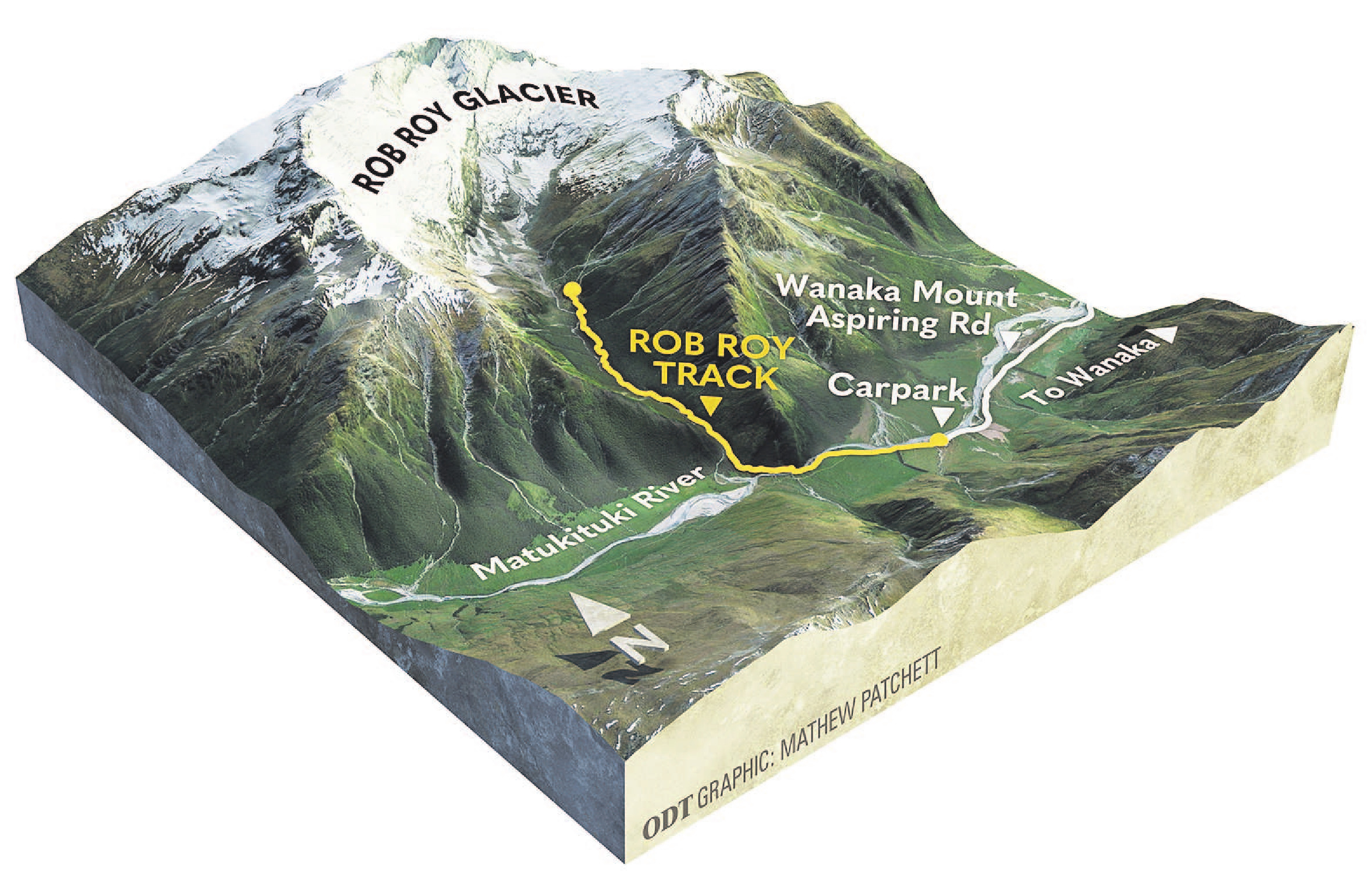

Its gorgeousness and easy accessibility has made it one of the OMGs of the social media age. It takes about an hour’s drive from Wanaka then a two- to three-hour walk up a gorge in the company of a living, breathing, rushing river making its escape from the glacier above. Talk about wairua.
Before you even get out of the car, though, the drive up is striking, passing hovering mountain ranges and roadside cliffs. At one stage the road bisects a huge unfenced river flat of a paddock, complete with free range sheep. No wonder tourists love it.

"Hang on — I’m burning fossil fuels to admire this wonder of nature that’s shrinking due to the burning of fossil fuels?"
Gulp.
Remind myself that I don’t have children and that each child adds about 5.7 times a person’s lifetime emissions. There’s only a certain number of times I can repeat that to myself, though. Drive guiltily on.
The road end has a toilet and is scenic enough for those who’d prefer to wander while others in their party walk ahead.
A swingbridge crosses high above ghoulish swirls of river, delivering you straight into a sighing beech forest. There wasn’t a bridge until 1987. Before then, this necessitated a hard core, linked-arm style of river crossing.

Keep climbing. The "haaaa" of the river is a constant companion. Disturbingly though, the beech forest is too quiet. Heartwarmingly, Matukituki Charitable Trust is bringing back the birdsong through a trapping programme run by volunteers putting in more than 2000 person-hours a year.
The Department of Conservation has done some beautiful work recently too with solid new track repairs. Unused remnants of the gnarly original track remind us how lucky we are to have modern tracks that allow the casual walker to access wilderness.
The suddenness of hitting the bushline can put the trippiness into any trip. Here it’s a particular joy as you’re instantly in an alpine basin powerfully edged by the glacier’s rock walls, waterfalls, blue cracks and white ice. More pragmatically, there’s another toilet.
During these low-tourist times, it’s possible to have the open basin to yourself. Delicious. A wee bit smug too.
Lying back to luxuriate, I heard a boom and looked up. Another boom. A mini cascade of ice fell off the edge of the glacier and down a waterfall. Above it was freshly exposed rock. When did that rock last see the light?
The waterfall stopped, presumably as chunks of ice plugged it up. Then it started up again. It kept going and there were more booms.
Melting ice is normal in late summer so this is either just a natural process or else it’s like watching an ongoing car accident. Glaciers around the world are receding and here was I just lying there. Joining me was a helicopter circling above for perfect viewing.

The thought still didn’t assuage enviro-guilt.
Back at the car park is a donation box for the Matukituki Charitable Trust. Their trapping programme covers about 100km of track in the area. They estimate that if every visitor donated $1 there would be enough to fund the project every year.
There’s also Te Kakano, a Wanaka community-based native plant nursery doing native habitat restoration. They appreciate donations, citing them as a way of sequestering carbon to alleviate the impact of your carbon footprint.












